How to Set Up a Local Area Network (LAN)
Determine the network you need

Count the number of computers that need to be connected. When installing a LAN, you need to know the number of computers connected to the network via Ethernet. This will determine the number of ports needed.
If the number of computers that need to be wired is 4 or less, you only need to use a router. If you have more than 4 machines, you need a switch to expand the number of ports available on the router.
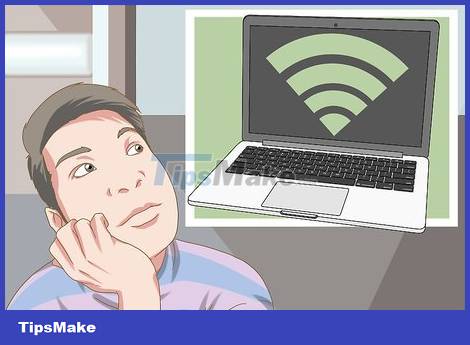
Decide whether to create a wireless network or not. If you want your device to connect wirelessly, you need a router that can broadcast a wireless network. Most routers on the market have this ability.
The switch does not allow connection of wireless devices, can only be used in wired LANs or to expand the number of available ports on the router.

Decide whether devices on the network can access the internet or not. If you want all connected devices to be able to access the internet, you need a router to handle the connection. If you don't need a network connection, just use a switch.

Calculate the distance between wired devices. This is not a difficult problem in homes, but the network cable cannot be longer than 100 m. If you want to connect a wire longer than 100 m, you need to use a switch as an intermediary.

Consider future needs. If you're already using all the ports, you should consider expanding them so you can connect more devices in the future.
Basic LAN setup
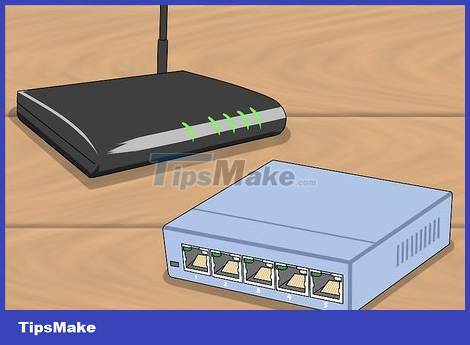
Prepare hardware devices. To create a LAN, you need a router or switch that acts as a network hub. These devices route information to the appropriate computers.
The router automatically assigns IP addresses to each device on the network. This is necessary if you want to share your internet connection with connected devices. You should set up a network with a router even if you do not intend to share an internet connection.
Switches are simpler versions of routers. It allows connected devices to communicate with each other, but does not automatically assign IP addresses and does not share an internet connection. A switch is most suitable when used to expand the number of available LAN ports in a network, as it can be connected to a router.
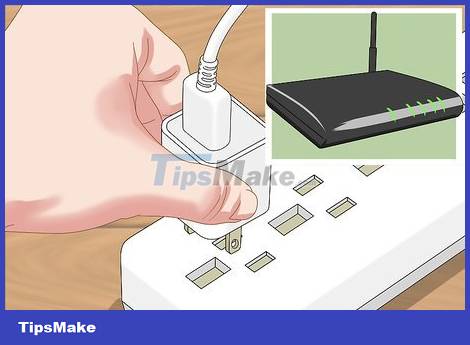
Set up the router. You don't need a complicated setup for a basic LAN. Just plug it in and place it near the modem if you want to share your internet connection.
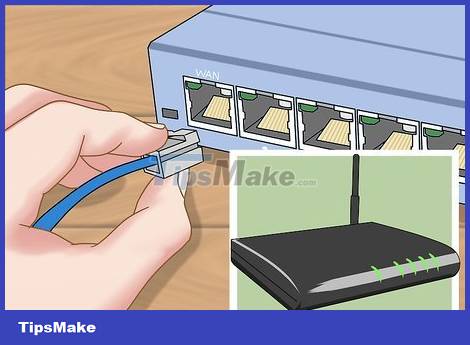
Connect the modem to the router (if necessary). If you plan to share your internet connection via a modem, connect the modem to the WAN/INTERNET port on your router. This port is usually a different color than the other ports.
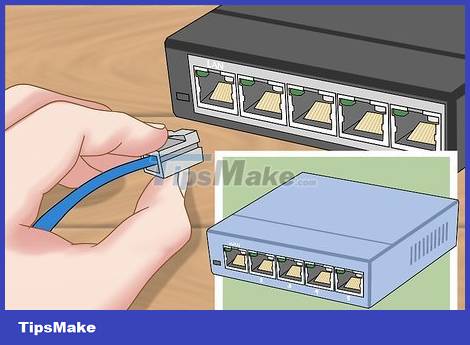
Connect the switch to the router (if necessary). If you use a switch to expand ports on your router, you need to plug the Ethernet cable into any LAN port on the router and switch. This is how to expand the network to all LAN ports on the switch.
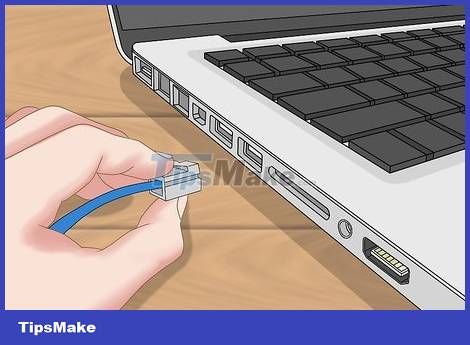
Connect the computer to the LAN port. Use an Ethernet cable to connect each computer to the LAN port on the router or switch. You do not need to pay attention to the order in which the ports are connected.
Ethernet cables cannot transmit data accurately if they are longer than 100 m.
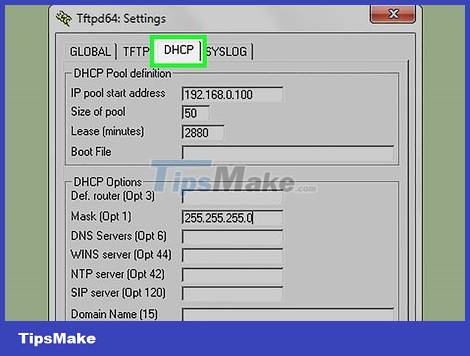
Set up one computer as a DHCP server if using a switch. If you only use the switch as a network hub, set up one computer to be a DHCP (Dynamic Host Configuration Protocol) server so that all computers on the network can easily receive addresses. IP.
You can quickly create a DHCP server on your computer by installing an intermediate utility.
The rest of the computers on the network will automatically receive IP addresses when the server is running, as long as it is set up that way.
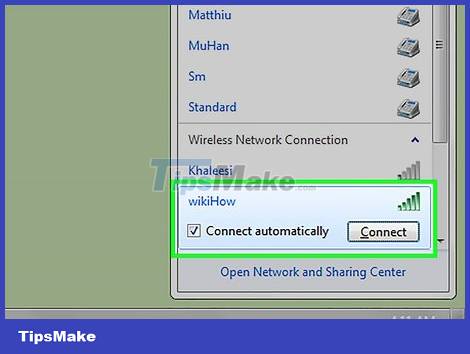
Check the network on each computer. After the computer receives an IP address, the computers can exchange with each other over the network. If you use a router to share the internet, each computer can access the internet.
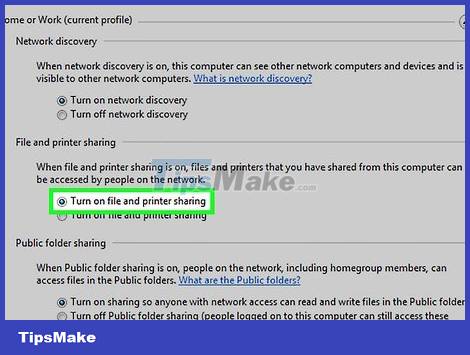
Set up file and printer sharing. After setting up the network, you can't see data on other computers unless those computers have file sharing enabled. You can set up sharing of files, folders, drives, and printers with devices on the network so that anyone on the network or only certain users can access the data.
Set up a wireless network
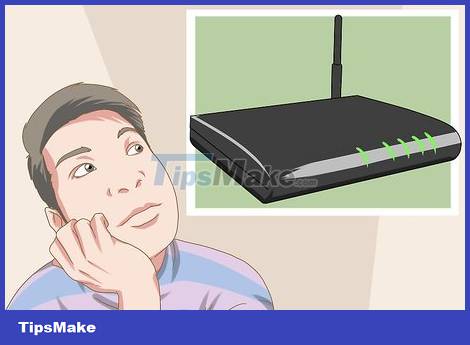
Set up the router. When setting up a wireless network router, there are a few things to keep in mind:
For easy troubleshooting, you should place the router near the modem.
You should place the router in a central location to maximize coverage.
You need to connect a computer to the router via an Ethernet cable during the installation process.
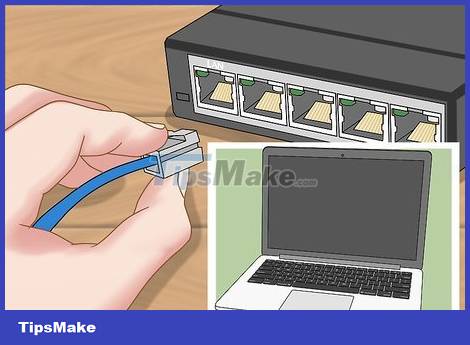
Connect the computer to one of the LAN ports on the router. You will use your computer's web browser to configure your router's wireless network.
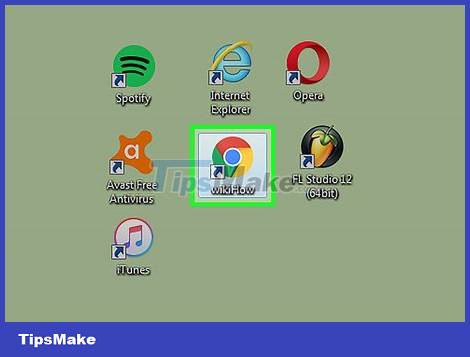
Open a web browser on your computer. You can use any browser.
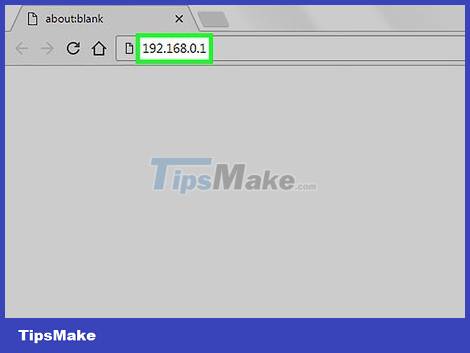
Enter the router's IP address. You can see the IP address printed on the bottom of the router, or in the accompanying documentation. If you can't find it, you can try the following:
Windows - right-click the Network button in the system tray → click Open Network and Sharing Center → click the Ethernet link → click Details → Find the Default Gateway section to see the router's IP address.
Mac - click the Apple menu and select System Preferences → click Network → click Ethernet connection → look for Router to see the IP address.
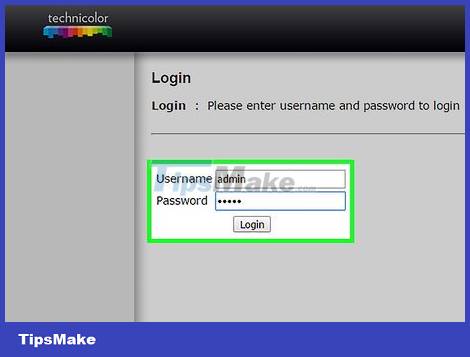
Log in to the administrator account. You are asked to log in to your router account. The default login information depends on the product line you use, but the username is usually "admin" and the password is "admin", "password" or left blank.
You can look up your modem type at https://portforward.com/router-password/ to find the default login information.
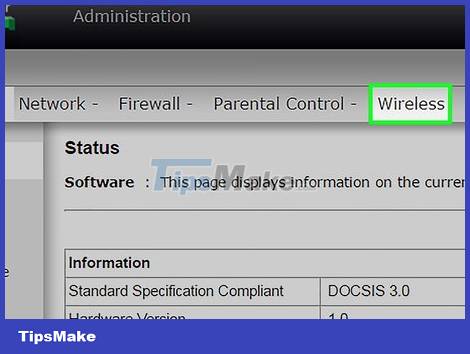
Open the Wireless section in your router settings. The location and terminology of this section will vary on each router.
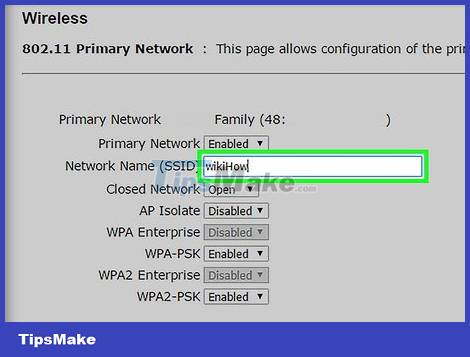
Change the network name in the SSID or "Network name" field. This is the name that displays in the list of available networks.

Select WPA2-Personal security standard . This is the best security standard on routers. Avoid using WPA and WEP unless you have to connect older, incompatible devices.
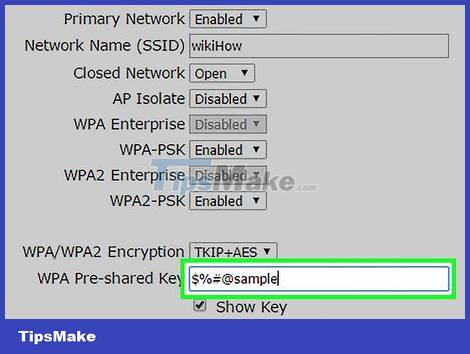
Create strong passwords. This is the password used to connect to the network. This field can be named "Pre-Shared Key".
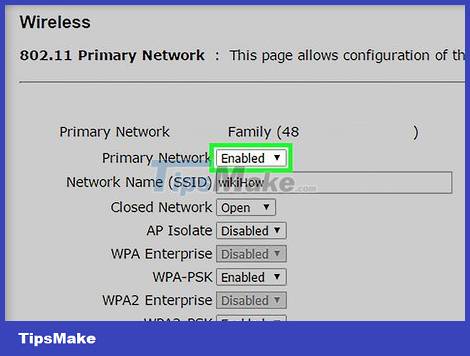
Don't forget to enable wireless network. Depending on the router you use, you may have to check the box or click the button at the top of the Wireless menu to activate the wireless network.
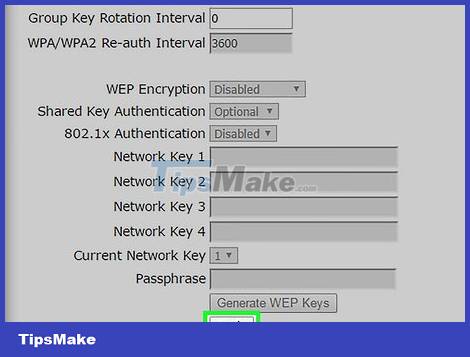
Click the Save or Apply button . This is the operation to save changes on the router.
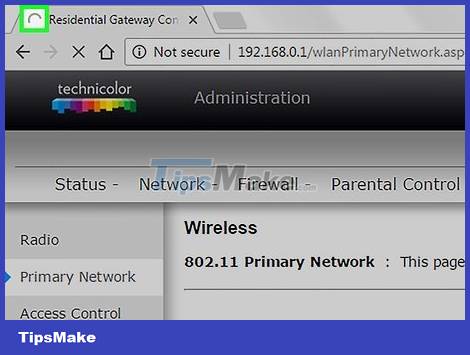
Wait for the router to reboot. You will have to wait a few minutes for the router to reboot and get internet.
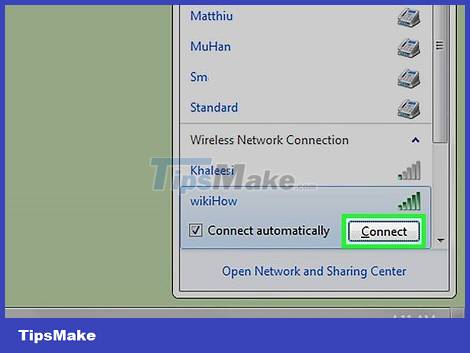
Connect the wireless device to the wireless network. Once you have a network, you'll see the network name displayed in the list of available networks on wireless devices within range. When connecting to the network, the user is asked to enter the password you just set.
Computers connected to the router via Ethernet do not need to enter a password.
You should read it
- Wide area network WAN - Next part
- How to scan local area network with Terminal on macOS
- How to Configure Your PC to a Local Area Network
- Broadband service transmission by local area network
- What is Near-me Area Network (NAN)?
- Learn about Home Area Network (HAN)
- GAN (Global Area Network) price, marketcap, chart, and fundamentals info
- How to create a local account while setting up Windows 10
May be interested
- Instructions for installing Mail Offline on MDaemon program.
 mail offline is a system that operates based on the pre-installed local area network (local area network) model. in this network you do not need to have a dedicated server, but you only need to specify a machine with relative configuration to be the server (mail server), and the capacity of the hard disk must be enough to store the message , hard disk capacity must match the number of mail and the number of employees of your company
mail offline is a system that operates based on the pre-installed local area network (local area network) model. in this network you do not need to have a dedicated server, but you only need to specify a machine with relative configuration to be the server (mail server), and the capacity of the hard disk must be enough to store the message , hard disk capacity must match the number of mail and the number of employees of your company - Learn 192.168.0.100 IP address for local network
 192.168.0.100 is a private ip address, meaning it is used exclusively on private networks where it will be the ip address of the router or one of the devices on the network.
192.168.0.100 is a private ip address, meaning it is used exclusively on private networks where it will be the ip address of the router or one of the devices on the network. - Local area network - LAN: Reference model OSI - Part IV
 in the past, in the 1980s, the need to use the network exploded in the world in terms of the number and size of the network. but each network is designed and developed by a different manufacturer of hardware and software, which leads to the situation that networks are not compatible with each other and that networks from different manufacturers are not able to contact. together
in the past, in the 1980s, the need to use the network exploded in the world in terms of the number and size of the network. but each network is designed and developed by a different manufacturer of hardware and software, which leads to the situation that networks are not compatible with each other and that networks from different manufacturers are not able to contact. together - What is Area 51? What happens in Area 51?
 area 51 is associated with stories of ufos and the possibility of alien technology testing. so what is area 51? what is going on inside area 51?
area 51 is associated with stories of ufos and the possibility of alien technology testing. so what is area 51? what is going on inside area 51? - Backup from this computer to another computer
 wncdude asked on networking forum about backing up this computer to another computer via local network.
wncdude asked on networking forum about backing up this computer to another computer via local network. - Desk Area Network (DAN)
 desk area network is an architecture for multimedia workstations based on atm connection. simply put, it is a connection between computer devices around asynchronous transfer mode (atm).
desk area network is an architecture for multimedia workstations based on atm connection. simply put, it is a connection between computer devices around asynchronous transfer mode (atm). - Learn about basic WLAN devices
 wireless network (wireless local area network) is the preferred wireless network system by providing high-speed data transmission, with long distances without worrying about wires, cables ...
wireless network (wireless local area network) is the preferred wireless network system by providing high-speed data transmission, with long distances without worrying about wires, cables ... - How to determine the device IP address on the local network
 before you begin to fix most network or internet connectivity problems, you need to know the ip address assigned to different hardware devices in your network.
before you begin to fix most network or internet connectivity problems, you need to know the ip address assigned to different hardware devices in your network. - What is WBAN (Wireless Body Area Network)?
 the term 'wireless body area network' was coined in 2001 by van dam. it is essentially a network of sensor nodes attached to the human body, used to measure human biological signals (heart rate, blood pressure, brain signals, etc.). .
the term 'wireless body area network' was coined in 2001 by van dam. it is essentially a network of sensor nodes attached to the human body, used to measure human biological signals (heart rate, blood pressure, brain signals, etc.). . - Set up and configure a LAN (Local Area Network)
 installing the network card: at first you have to install the network card into the computer by: turning off the computer, removing the computer's cover, then you find an empty slot to plug in the network card. turn the screw back on. then close the case. ...
installing the network card: at first you have to install the network card into the computer by: turning off the computer, removing the computer's cover, then you find an empty slot to plug in the network card. turn the screw back on. then close the case. ...










 How to Set Up Your Internet
How to Set Up Your Internet How to Set Up a Wired Network (Ethernet)
How to Set Up a Wired Network (Ethernet) How to Reset Router Password
How to Reset Router Password How to Set Up a Wireless Connection to a Printer
How to Set Up a Wireless Connection to a Printer How to Find the Subnet Mask
How to Find the Subnet Mask How to Ping an IP Address
How to Ping an IP Address